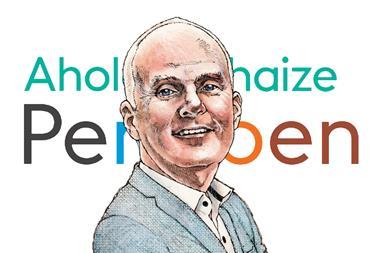David Swensen was first appointed Yale’s chief investment officer in 1985, responsible for the endowment that has supported the university financially during its nearly 300 year history. The endowment’s value then was $1bn and during that year it contributed $45m to offset university expenses, 10% of their total. At mid-year 2000, after 15 years of Swensen’s stewardship, the endowment totalled just over $10bn; in the next fiscal year it will fund $390m of university expenses, 30% of their total. Yale’s annualised net rate-of-return in the Swensen era has been 17.4%, placing it among the very top performers in its peer group of universities and foundations.
Had Yale instead achieved the average returns of its peer group during this 15 year period, its endowment today would be $4.4bn less than its current $10.1bn. In rough terms, then, under the average performance scenario, Yale’s endowment would make a $220m contribution to university expenses, less than 60% of the current level. Among many likely adverse consequences, this loss of funds would reduce substantially the university’s present ability to accept the most qualified pool of students without regard to their ability to pay for their education.
Remarkably, Yale’s investment success results not from preponderant exposure to the US quoted equity markets and their stellar performance in the 1990s. On the contrary, Yale systematically reduced such exposure during the decade, to just a 15% allocation, about one-fourth of the US institutional norm. Yale instead developed an unconventional mix of assets and allocations in search of ‘a portfolio for all seasons,’ in Swensen’s words, one that would produce high risk-adjusted returns, while meeting the two-part goal of contributing significantly to current university expenses while preserving long-term ‘purchasing power,’ or post-inflation value.
Among Yale’s unusual moves, well-noted in private equity circles anecdotally, was the increase in its allocation to venture capital and buyout partnerships from less than 1% of assets in 1985 to 25% today, on an invested basis. Now, thanks to David Swensen’s outstanding new book* investors can understand factually Yale’s history with private equity and the intellectual reasoning and practical experience supporting its uncommonly high allocation to the asset class. (Swensen’s book is a sophisticated study of investing at large, but this review will focus on its commentary on private equity, the element of Yale’s strategy that has contributed most to the endowment’s out-performance versus its peers.)
In a recent interview, Swensen admitted that he came to Yale 15 years ago with “an exactly opposite set of preconceived notions” about how to manage the university’s investments from the set of principles that now govern how and where the endowment is deployed. Then, the endowment was a “typical institutional portfolio,” with “marketable securities” (that is, quoted stocks and bonds) in excess of 90% of assets and dominated by a “huge commitment to domestic equities”. Other than a “bias coming in” after six years on Wall Street that “active management (of stocks) is not worth the time, energy and expense required,” Swensen had no particular expectation that he would markedly change the endowment’s course or investment choices.
The origins of Yale’s now immensely successful private equity program were modest, and the result of near-random investment choices in the 1970s and early 1980s. Shortly after his arrival at Yale, Swensen (working with his deputy Dean Takahashi) assessed Yale’s existing manager relationships and direct holdings to decide whether they “would make a positive impact” on endowment performance. Exposure to those that passed the test would be increased, to justify following them intensively; the also-rans would be eliminated gradually from the portfolio.
Among the holdings were three almost insignificant private equity positions, probably the result of past investment committee members’ recommendations, that Yale had no idea how to value nor understanding of whether they had even been profitable. After some effort, the new team determined that investing with the three firms involved – Kleiner Perkins and Mayfield, both of which were pursuing venture investments, and AEA, focusing on buyouts – had indeed been profitable and that the asset class (although it was hardly regarded as one at the time) merited further attention.
Thereafter, Swensen and Takahashi aimed to build a larger portfolio in a “reasonably thoughtful way” and, to that end, “talked with everyone they could in the venture capital community to come up with a list of the premier firms in the industry”. Several – including JH Whitney and Sutter Hill – were already sufficiently well-supported that Yale failed in its initial efforts to join their partnerships. Eventually, through persistence on its part and the departure of other backers, Yale obtained exposure to “each and every one of the firms” it had first targeted. They now represent a ‘Who’s Who’ of Silicon Valley and have contributed enormously to Yale’s strong returns over the last decade, particularly in the last two years.
Yale consequently had significant exposure to US venture capital at precisely the right time, when partnerships formed several years ago harvested sometimes miraculous gains arising from “one of the greatest speculative bull markets ever,” in Swensen’s view. In 1999 and 2000 “we were very aggressive sellers of distributions, which was not a hard decision to make,” given the technology valuations offered by the quoted markets at the time. Swensen also felt it important to “recycle gains as fast as possible” to recommit funds to venture partnerships, so that Yale would have continuing exposure to new enterprises at private, as opposed to public, market valuations.
Over the years, buyout partnerships were also added to Yale’s roster, both domestically and internationally. Swensen and his team exhibited a notable preference for independent firms and those capable of generating returns by improving corporate performance, rather than relying on leverage and financial engineering. In particular, in today’s markets, Swensen has little time for mega-buyout funds unless he senses “a special opportunity…involving strong operations-orientation or restructuring skills”. In general, he feels mega-fund sponsors are driven more by a desire to accumulate fees than to create value, and thus “the economics are hopelessly skewed against the limited partners”. By contrast, Swensen is more comfortable with the prospects for middle market buyout funds (by which he means those no larger than about $400m), where “great value-added propositions” still exist.
Asked for the advice he would offer to an institution investing now in private equity for the first time, Swensen was cautious, as he is “not a big believer in market timing,” particularly in respect of blind-pool private equity funds that will invest over the next several years. Yet he did observe that the US venture capital sector “is a lot less interesting now” than it was five or 10 years ago, particularly in view of the vastly increased capital now devoted to it, and that “it is a good time to lean against the wind”. Nonetheless, he suggested that “it doesn’t hurt to get a toe in the door with the really great venture firms,” even with a far smaller position in their funds than initially might make administrative sense for an institution. Such a strategy at least allows the investor, in Swensen’s view, “to be introduced, to be at the table, and to have the opportunity to write a larger check later on”.
While unwilling to make sector ‘bets’ based on market timing, by contrast Swensen is always interested in finding capable private equity fund managers of skill, energy and, especially, integrity, to back. For investors new to private equity, then, he suggested their “home market as a great place to start,” assuming a reasonable set of opportunities, as “they will know it better and their contacts will be better”. When investing abroad, Yale has found it “very difficult to check people out in the same way” as at home, which has led sometimes to problems arising from relying “less on our own independent knowledge”.
Swensen’s firmly-held views are supported by a wealth of data assembled, analysis performed and hard-won experience gained by Yale over the years in private equity investing. One of his book’s great strengths is its use of all these resources in recounting Yale’s history with private equity and other alternative assets and, in many instances, to defy conventional wisdom decisively. For example, Swensen includes a devastating analysis of risk-adjusted buyout returns, drawn from a large sample of exited transactions from 1987 to 1998. This shows that the pooled return on those buyouts, while seemingly high at a 48% IRR, failed by a large margin to exceed comparable quoted equity returns when the buyout deals are matched with a “similarly sized, similarly timed, and similarly leveraged investment in the S&P 500”. Swensen is careful to note, however, that Yale’s own experience has been different, in that the returns on buyout transactions completed by managers in its portfolio “comfortably exceed the risk-adjusted marketable securities bogey”. He is convinced that carefully chosen managers pursuing genuinely value-creating strategies can continue to deliver returns superior to those of the public markets.
In a world of often dry, self-promoting or transitory books on business and finance, finding one as wise, well-written, thoughtful and time-tested as David Swensen’s Pioneering Portfolio Management is rare. Investors of all types, but particularly those interested in private equity, should take the opportunity to absorb the wisdom of a long-term, consistently top decile performer who has contributed handsomely to Yale’s much-improved fortunes.
John Barber is a director of Helix Associates in London
*Pioneering Portfolio Management: An Unconventional Approach to Institutional Investment (The Free Press, New York and London: 2000; $35)












No comments yet